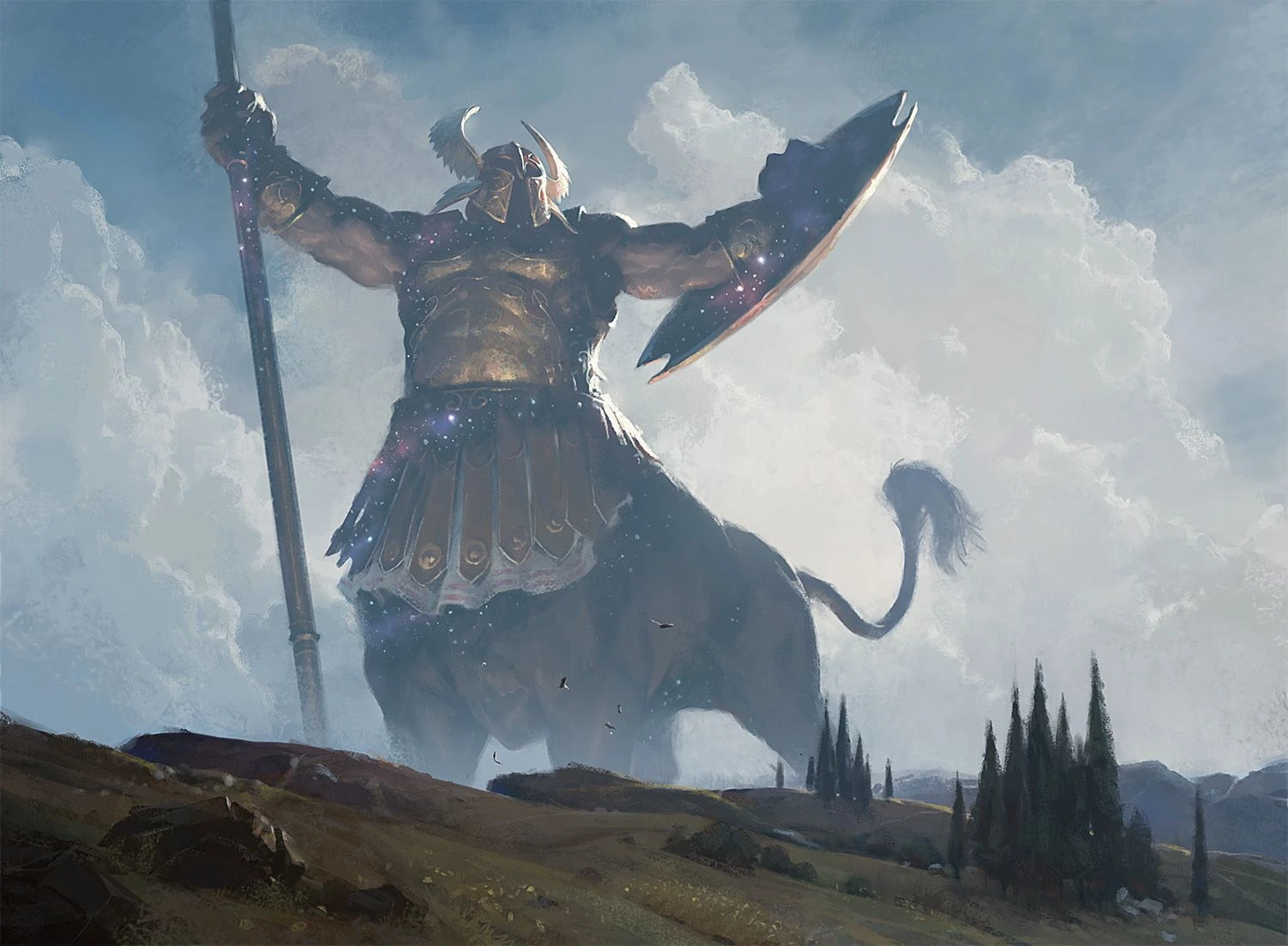Table of Contents
Hello everyone! So I’ve been lucky enough to have MTG Arena Zone as a platform to share my ideas with the world for around 9 months now; in that time a deck I’ve created or helped create has had a substantial impact on the metagame 4 times. Those four decks were Dimir 8 Shark in Standard, Dimir Yorion in Standard, Selesnya Company in Historic (with the base from fireshoes), and now Temur Koma in Historic (base from Jeskai Turns).
Some had varying impacts, some I had a base to start off of, but all of them did perform very well in metagames that were relatively established. With that, I believe I do have valuable insight on how to approach making a new deck in a metagame or even deck selection in a metagame to circumvent conventions and attack per-established ideas. Furthermore, this will be a fun trip down memory lane as I use a lot of personal examples to help illustrate my points. Let’s get started.
Use History to Your Advantage
This point is the most relevant at the beginning of a new format, but it can transmit to established formats as well. The most recent example of this is the Temur Koma deck as it’s functionally just the Jeskai Turns deck with a few new cards thrown in. Despite these decks being so close and the port being seemingly obvious, the deck is just catching on now and is putting up results akin to the Turns deck. When approaching a new format, I believe the first step should always be to look at what was historically good in the format you’re playing and compare potential decks from there. This was a super easy comparison as all I had to do was change a few cards, but if you have examples of decks that performed well in that format in the past and see a way to somewhat replicate it, it’s likely worth your effort to do so.
You can also extend this logic further with archetypes rather than specific decks. For example, Control has struggled to make a foothold in Standard for quite awhile except for a few notable exceptions. What is an example of that exception? Temur Reclamation absolutely dominated Standard because it was a Control deck with an unbeatable late game. That helped set the precedent that your Control deck really wants to go over the top of the format rather than trying to edge opponents out with card advantage. How was that logic applied later? Dimir Yorion was spawned using this principle as a control deck that had a late game that went over everything else in the form of Ugin, the Spirit Dragon.
This is certainly not a fool proof system as decks or archetypes that were good in the past could be unplayable in the current day, but that’s just the first step to identifying a potentially playable deck.
Identify the Bombs
Whether we’re talking Standard or Historic, there’s an absolute myriad of powerful cards in both formats. It can definitely be hard to keep track of them all, but nobody said being a brewer is easy! To illustrate this point, when Zendikar Rising came into Standard thus a lot of sets rotated out, I actually compiled a Tier list of every relevant Standard card. If you’re interested to see what that looked like, you can look below.
Why did I go through the effort? When you combine knowledge of the card pool with historical examples, you can frequently make winning combinations right off the bat. Keep in mind, this doesn’t just work in new formats either. If you have tabs on every powerful card, especially those without a shell, you can suddenly strike gold if inspiration happens to come at the right time. If you look at my card Tier list above, I even noted that Feasting Troll King was a wildcard which I defined as “Potentially powerful cards that would need very specific conditions to play”.
Well, the conditions were met and Mono Green Food was born not too much later. I’m sad to say that I had nothing to do with the making of the deck, but clearly someone else was using a similar framework to this to create it. How do I know? The deck utilized the Food package that was broken with Oko, Thief of Crowns and repurposed it with a card that saw 0 play, but was exactly what the deck needed. Do you need to create an entire list like I did to keep tabs on everything? Not really, but if brewing means enough to you then it could be worth it.
If we want a more recent example, we can use Temur Koma again. Right after the Time Warp ban, I wrote a Premium article talking about how the ban missed the mark and they missed the bombs of the format. You can read it below.
I didn’t think that Jeskai was broken because Velomachus Lorehold could hit a Time Warp (but don’t get me wrong, that was broken), but a Control shell that has Indomitable Creativity is just nuts. It took very little work to repurpose the Turns deck into a Temur shell and here we are.
Figure Out the Holes in the Metagame and Exploit Them
Every format has a perceived best deck and a bunch of decks orbiting it forming what we would know as a metagame. Generally the metagame is a culmination of predominately influencing decks and influenced decks. An influencing deck is a deck that is just generally powerful thus sees play where an influenced deck is one that is contextually powerful. You could definitely have a mix of the two as well (good decks that need the right metas), but for simplicity’s sake we’ll stick with these two categories. With that established, let’s talk Zendikar Rising standard.
Before there were any bans in Zendikar Rising, there were really 2.5 playable decks: Four Color Omnath, Sultai Control, and Four Color Clover (though this had a bad matchup against the previous 2 decks). Pretty much the entire metagame revolved around Omnath, Locus of Creation and
I played both Omnath and Sultai extensively and was getting bored quickly. Omnath was great but it felt impossible to get an edge in the mirror. Sultai was decent as counterspells plus Uro can only be so bad, but the mana wasn’t great and if you didn’t draw enough interaction you got clobbered by Omnath anyway. I really wanted to get an edge in the format so I had to figure out where the hole in the metagame was. I already identified that drawing a lot of interaction against Four Color was solid, but the manabase and interaction suite of Sultai left a lot to be desired. Furthermore, functionally every deck in Standard was just a pile of creatures and very few spells. Combining all these facets together, I postulated that a deck that was completely dedicated to beating creatures could potentially be good. I got to work, made Dimir 8 Shark, and absolutely obliterated the top decks.
A couple of months pass, Uro and Omnath got banned, a new format bloomed once again. I don’t have a good tier list from that time unfortunately, but this time, midrange was king. Every deck was trying to throw bombs at each other until one of them came out on top. At the same time, Big Red was trying to break into the metagame, but was ultimately unsuccessful due to not being consistent enough. If you want to see what that looked like, you can check the guide below.
Although the deck was nowhere near good enough, the valuable insight I came away with was that Ugin, the Spirit Dragon was in a really nice spot in the metagame. Monored wasn’t great, but Ugin absolutely dominated any board it came down on. With this knowledge, I went back to step 1 and revisited an old popular deck, Temur Ramp.
Although Temur Ramp was powerful against the other midrange decks, both Aggro decks and Rogues felt impossible to beat. With that, I knew that Ugin was still good, but not having interaction wasn’t. The next step I took was a slight color change from Blue to White so I can afford more ways to interact with creatures.
This was definitely better, but struggling against Rogues and the midrange Yorion decks was a dealbreaker for me. So I went back to the drawing board. Ugin was still great, you can’t be completely soft to creatures, but trying to just control the board will make you lose to Rogues and Yorion decks. I then realized an important point, all my decks prior were mostly cards that played to the board prior to playing Ugin. The best thing about Ugin though, is that you don’t need (or want) anything on board when you’re playing him because you’re likely to minus anyway. That helps explain why although Monored didn’t feel good, it could still win as it was good at getting an Ugin on board. So what’s a deck that typically doesn’t play permanents, get to 8 mana consistently, and has interaction to not get run over?
I made the deck, got an obscene record, and shared the guide where many others got great results with it as well.
Conclusion
Realistically speaking, trying to make a brand new deck to attack a metagame is extremely difficult and you’re definitely going to get it wrong way more than you’re going to get it right. However, you can utilize the three steps to do more than just make decks from scratch. The most successful way to utilize this approach is to apply it to an existing deck to determine if it’s well positioned for a particular reason and/or if you can build it in a specific way to be good in the metagame. My favorite example of this was Brad Nelson in 2015 where Abzan Control was the best deck. Take a look at his deck below.
[sd_deck deck=”VvWcfD-lS”]
The deck played like an archetypical non-blue control deck utilizing value creatures and Planeswalkers to win. With that, small creature removal was really bad against Control so Brad came up with the genius plan of bringing in 4 Fleecemane Lion to catch the opponent’s flat footed and to dominate the mirrors. Since then, I’ve been obsessed with trying to attack metagames and have been trying to emulate his brilliance since. It’s been harder considering how powerful some of the available card pool is (looking at you Mystical Archives and Throne of Eldraine), but this practice is still very rewarding and effective.
Thanks for reading!

Premium
Enjoy our content? Wish to support our work? Join our Premium community, get access to exclusive content, remove all advertisements, and more!
- No ads: Browse the entire website ad-free, both display and video.
- Exclusive Content: Instant access to all exclusive articles only for Premium members, at your fingertips.
- Support: All your contributions get directly reinvested into the website to increase your viewing experience!
- Discord: Join our Discord server, claim your Premium role and gain access to exclusive channels where you can learn in real time!
- Special offer: For a limited time, use coupon code L95WR9JOWV to get 50% off the Annual plan!









































